
Charles Kemble was a Welsh-born English actor of a prominent theatre family.

George Stephen Kemble was a successful English theatre manager, actor, and writer, and a member of the famous Kemble family. He was described as "the best Sir John Falstaff which the British stage ever saw" though he also played title roles in Hamlet and King Lear among others. He published plays, poetry and non-fiction.

Frederick William Hervey, 1st Marquess of Bristol, styled Lord Hervey between 1796 and 1803 and known as The Earl of Bristol between 1803 and 1826, was a British peer.

James Wood was an officer of the U.S. Continental Army during the American Revolution and the 11th Governor of Virginia. He was an abolitionist.

John Adolphus (1768–1845) was an English barrister and historian.

Theophilus Cibber was an English actor, playwright, author, and son of the actor-manager Colley Cibber.
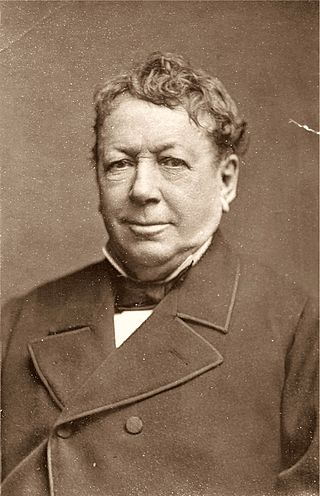
John Baldwin Buckstone was an English actor, playwright and comedian who wrote 150 plays, the first of which was produced in 1826.

The Albany, or correctly, Albany, is an apartment complex in Piccadilly, London. The three-storey mansion was built in the 1770s and divided into apartments in 1802.

Basil Sydney was an English stage and screen actor.
William Manners Tollemache, Lord Huntingtower, known as Sir William Manners, Bt, between 1793 and 1821, was a British nobleman and Tory politician.

Sylvester Douglas, 1st Baron Glenbervie, PC, KC, FRS, FRSE, FSA was a British lawyer, politician and diarist. He was Chief Secretary for Ireland between 1793 and 1794.
Alexander Pope was an Irish actor and painter.
James Aickin, was an Irish stage actor who worked at the Edinburgh Theatre in Scotland and in theatres in the West End of London.
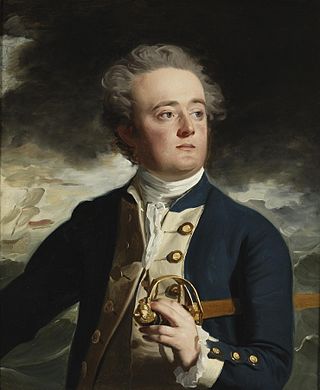
John Loring was an officer in the Royal Navy who served during the American War of Independence and the French Revolutionary and Napoleonic Wars.

Richard Wroughton (1748–1822), was an actor, who worked mainly in Covent Garden and Drury Lane, and occasionally in the city of his birth, Bath.
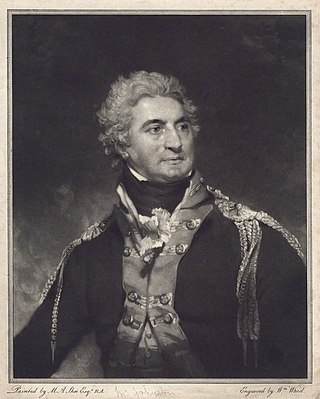
John Henry Johnstone (1749–1828), also known as 'Jack' Johnstone or 'Irish' Johnstone, was an Irish actor, comedian and singer. He was a notable performer of Stage Irishman roles.
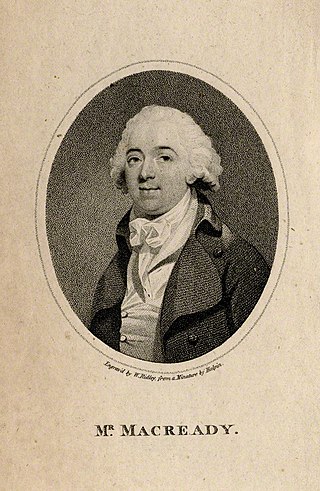
William Macready the Elder (1755–1829) was an Irish actor-manager.

Sir Frederick Fletcher-Vane, 2nd Baronet, was a British politician, landowner and aristocrat. He was MP for the pocket borough of Winchelsea, between 1792 and 1794, the borough of Carlisle, between 1796 and 1802, and again for Winchelsea, between 1806 and 1807. Sir Frederick was the 2nd Baronet of Hutton and a descendant of Sir Henry Vane the Elder. In 1788 he served as High Sheriff of Cumberland.
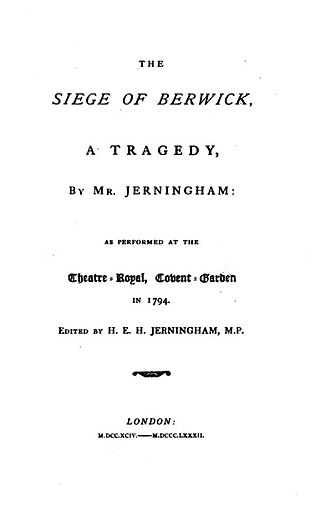
The Siege of Berwick is a four-act verse tragedy by Edward Jerningham, acted in 1793 and published the following year. The text was republished in the third volume of Jerningham’s Poems and Plays (1806) and then in a separate edition as The Siege of Berwick: a tragedy by Mr Jerningham as performed at the Theatre Royal, Covent Garden, edited by his great grand-nephew Hubert Jerningham in 1882. The subject concerns a supposed incident during the English invasion of Scotland in 1333. Though the play is of historical interest, it was not a critical success.

Arabella Menage, also known as Mrs. Sharp, was a British actress and ballet dancer. She was the wife of the artist Michael William Sharp.


















